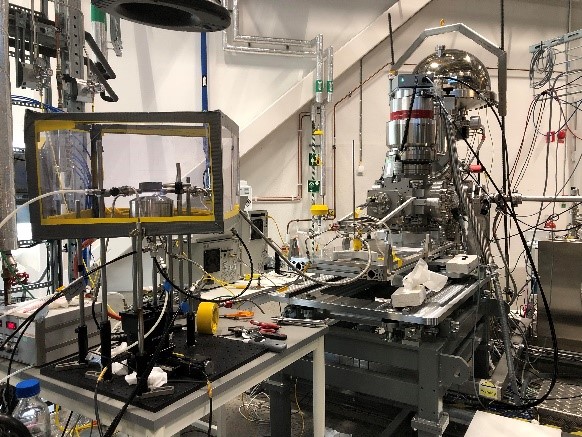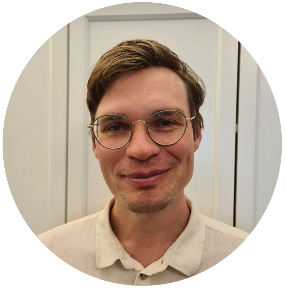Inspired by the call for Light and Material Young Investigator Synergy Award, associate senior lecturer Kim Cuong Le at Combustion Physics and postdoc Calle Preger at MAX IV, have joined forces to build an atmospheric pressure microwave plasma reactor for gas phase synthesized graphene (GSG). Leveraging Lund’s advanced light sources, the project holds promise for sustainable technology, driven by GSG’s potential in energy storage and sensing devices.
This project aims to build an atmospheric pressure microwave plasma reactor for producing GSG. After that, advanced laser and X-ray diagnostics will be employed to characterize GSG formation and properties.
“The concept and enthusiasm for GSG emerged a few years ago. However, due to a shift in research focus and a lack of initial results, securing funding became challenging. Recently, following the successful outcomes of our inaugural in-flight aerosol beamtime at MAX IV, and inspired by the Light and Material synergy calls, we found renewed motivation,” says Cuong Le. “We are now committed to integrate x-ray and laser-based diagnostic techniques to explore the properties of gas phase synthesized graphene (GSG) in a more comprehensive manner.”
The project aims to advance technology for producing graphene powder, particularly the GSG variant, with reduced environmental impact in response to the escalating demand in both research and industry. It also leverages utilization of advanced light sources in Lund for in-depth studies of these produced materials, including in-flight characterization at MAX IV. “We are uniquely positioned with exceptionally favorable conditions, boasting world-class online detection methods and an unparalleled array of combustion and aerosol platforms to propel our research in this direction,” says Calle Preger.

Cuong Le and Calle Preger believes that the proposed atmospheric plasma synthesis method for graphene holds great promise as a continuous, scalable, and cost-effective technique for producing high-quality few-layer graphene. Notably, this approach eliminates the need for substrates, catalysts, solvents, or acids, making it an environmentally friendly process. The potential of graphene as a highly sustainable material stands out, offering significant opportunities to enhance the sustainability of various industries.
The escalating demand for graphene powder, driven by its excellent electrical conductivity and mechanical stability, underscores its importance. Looking ahead, GSG holds vast potential for diverse applications, particularly in sustainable energy storage devices such as supercapacitors and Li-batteries. Additionally, GSG can play a pivotal role in the development of innovative sensing devices for applications, including food packaging and human health monitoring.
To advance these applications, we are committed to fostering collaborations with external experts in relevant fields, ensuring a multidisciplinary approach to harnessing the full potential of GSG.
The team:

Kim Cuong Le is an associate senior lecturer at the Division of Combustion Physics. She specializes in developing and advancing laser-based diagnostics, with a primary focus on unravelling the mysteries of black carbon stemming from incomplete combustion processes.

Calle Preger, a postdoctoral researcher stationed at the FinEstBeAMS beamline at MAX IV , with a PhD background in material science and engineered nanoparticle synthesis. Calle’s research is centred around in-flight surface chemistry analysis of aerosol particles using electron spectroscopy, and new development of novel aerosol characterization methods using x-rays. He was the key person in the development of the new aerosol sample delivery system at MAX IV that is poised to play a pivotal role in this project.
Read more about the initial collaboration in the enclosed link: https://www.maxiv.lu.se/article/insights-into-soot-emissions-with-a-newly-developed-aerosol-sample-delivery-system-at-max-iv/
Read about the other projects granted the Light & Materials Young Investigator Award 2023:
- Confined light-matter interactions and exciton dynamics with a versatile tuneable microcavity
- Light-Driven Material Optimization
- Optimizing New Generation Sustainable GaInP Nanowire based micro-LEDs (μ-LEDs) with AI-Enhanced Functional Imaging
- Studying the temporal dynamics of light driven coherent electron waves in nano structures
